List map/flatMap
March 25, 2018
Let's extend our look at List and map() to flatMap() and beyond.
Suppose you have a List of Lists.
let lists
= List.cons(head: twoThreeFour,
tail: List.cons(head: fiveSixSeven,
tail: List.cons(head: sixSevenEight,
tail: List.empty)))
What if instead we want to combine two lists into a single list? The append() method does this.
extension List {
func append(_ otherList: List) -> List {
return foldR(otherList){(a,b) in List.cons(head: a,
tail: b)}
}
}
We can use it like this.
let listsA = twoThreeFour.append(fiveSixSeven)
.append(sixSevenEight)
Notice that lists and listsA are different types.
We want a join() method that could turn lists into listsA.
The signature of join() is a tough one. We want to end up with List<A> given that our input is List<List<A>>. Thanks to Rob Napier for clarifying what's possible with the current state of Generics in Swift 4.
extension List {
func append(_ otherList: List) -> List {
return foldR(otherList){(a,b) in List.cons(head: a,
tail: b)}
}
func join<B>() -> List<B> where A == List<B> {
return foldR(List<B>.empty, {(a,b) in a.append(b)})
}
}
You can see that lists.join() is the same as listsA.
One place we can use join() is in an implementation of flatMap(). In general, flatMap() is a lot like map(). The difference is that map() accepts a function from (A) -> B while flatMap() accepts a function from (A) -> List<B>.
extension List {
func append(_ otherList: List) -> List {
return foldR(otherList){(a,b) in List.cons(head: a,
tail: b)}
}
func join<B>() -> List<B> where A == List<B> {
return foldR(List<B>.empty, {(a,b) in a.append(b)})
}
func flatMap<B>(_ f: @escaping (A) -> List<B> ) -> List<B> {
return map(f).join()
}
}
Use flatMap() like this.
let flatMapDoubleTwoThreeFour
= twoThreeFour
.flatMap{x in List.cons(head: x,
tail: List.cons(head: x,
tail: List<Int>.empty))}
Suppose we have the list fiveSixSeven. Remember that looks roughly like this.
The result is (2(2(3(3(4(4( ))))))).
If we introduce a pure() we can write map() in terms of flatMap() and pure() as usual (this post is not explaining these concepts - just illustrating them in this case. Another post will look into these various functions.)
extension List {
func append(_ otherList: List) -> List {
return foldR(otherList){(a,b) in List.cons(head: a,
tail: b)}
}
func join<B>() -> List<B> where A == List<B> {
return foldR(List<B>.empty, {(a,b) in a.append(b)})
}
func flatMap<B>(_ f: @escaping (A) -> List<B> ) -> List<B> {
return map(f).join()
}
init(pure a: A) {
self = List.cons(head: a, tail: List.empty)
}
func mapAlt<B>(_ f: @escaping (A) -> B) -> List<B> {
return flatMap{a in List<B>(pure:(f(a)))}
}
}
For completeness in this sort of demo, here's apply()
extension List {
func append(_ otherList: List) -> List {
return foldR(otherList){(a,b) in List.cons(head: a,
tail: b)}
}
func join<B>() -> List<B> where A == List<B> {
return foldR(List<B>.empty, {(a,b) in a.append(b)})
}
func flatMap<B>(_ f: @escaping (A) -> List<B> ) -> List<B> {
return map(f).join()
}
init(pure a: A) {
self = List.cons(head: a, tail: List.empty)
}
func mapAlt<B>(_ f: @escaping (A) -> B) -> List<B> {
return flatMap{a in List<B>(pure:(f(a)))}
}
func apply<B>(_ fs: List<(A) -> B>) -> List<B> {
return fs.foldR(List<B>.empty){
let f = $0
return $1.append(self.foldR(List<B>.empty){
List<B>.cons(head: f($0), tail: $1)
})
}
}
}
Today's code comes from this sample code and here's the Playground it comes from.
That's the end of our look at Lists.
Next time we'll write a method to reverse the order of elements in a list. Then we can write foldRight in terms of foldLeft and reverse. We'll also write map and filter.
